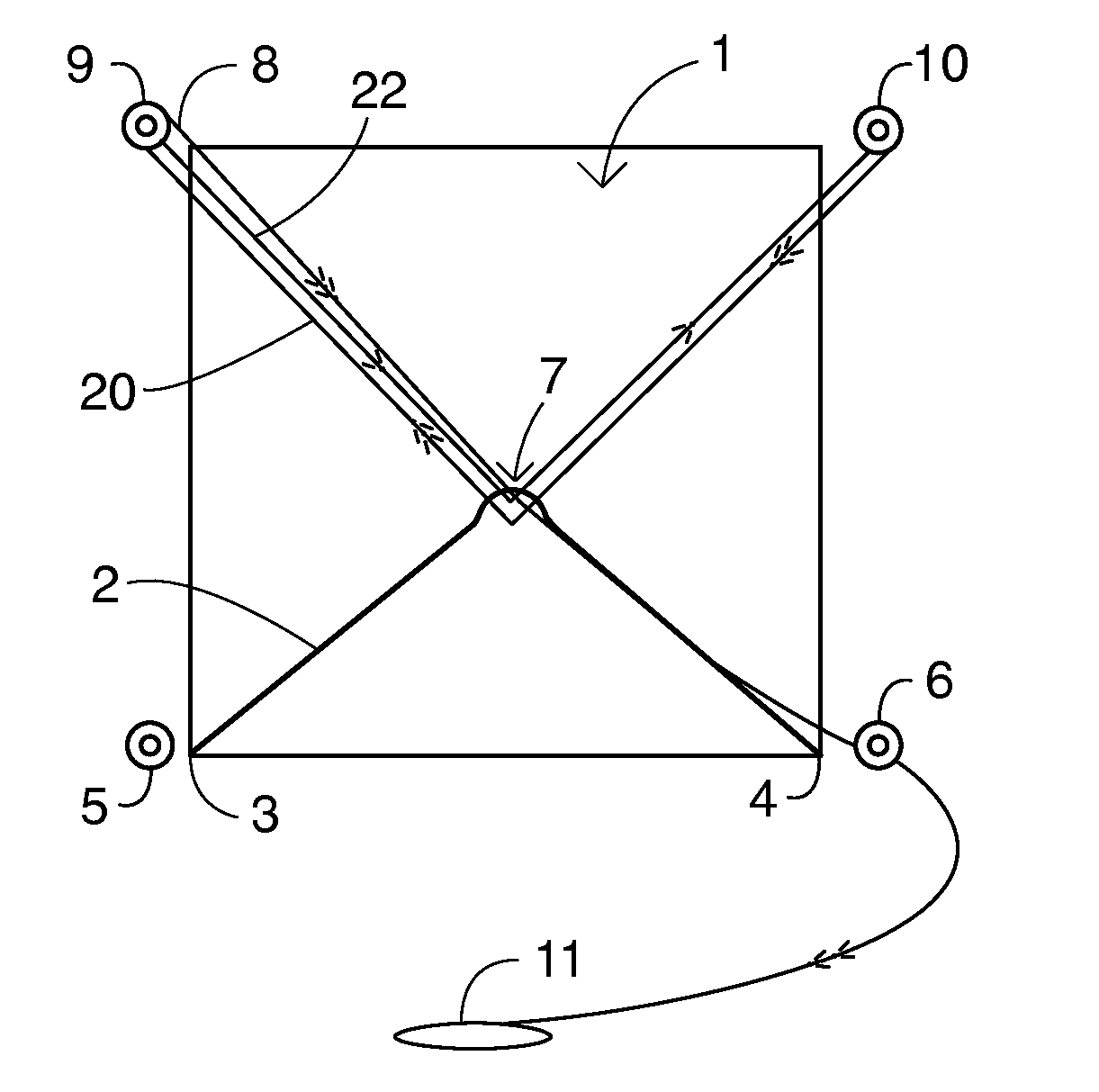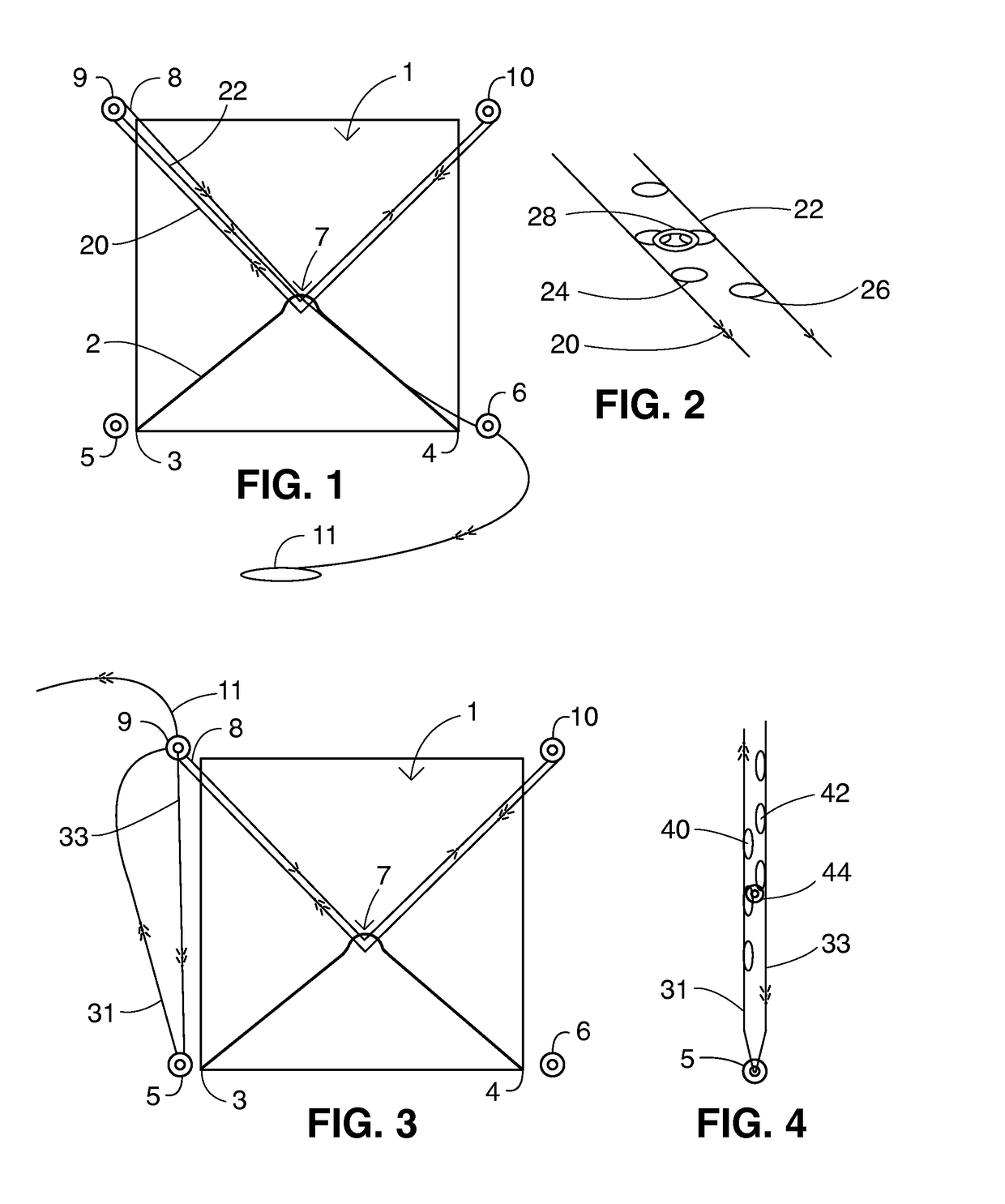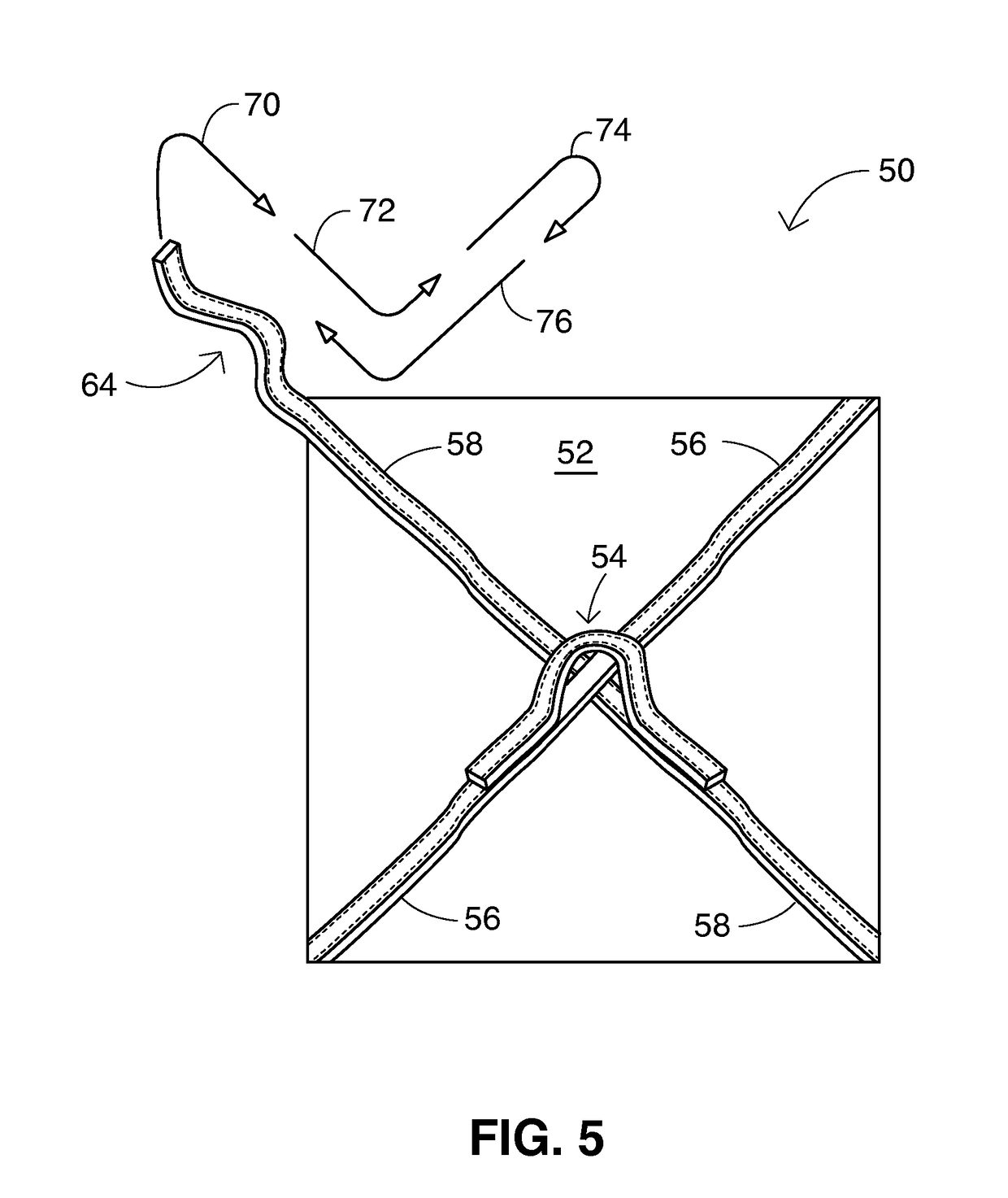Modified end face panel for a flexible insert for a container and tensioning method
a flexible insert and end face technology, applied in the direction of packaging, transportation and packaging, large containers, etc., can solve the problems of content spillage, problems, bulging, etc., and achieve the effect of quick and strong secure and tension, easy locking into position, and reducing the time it takes
- Summary
- Abstract
- Description
- Claims
- Application Information
AI Technical Summary
Benefits of technology
Problems solved by technology
Method used
Image
Examples
Embodiment Construction
[0043]The term “container” will be used hereinafter to include standard transport containers, cargo vessels and cargo storage space, and “bulk material” includes, but is not limited to, large quantities of materials which may be solids in the form of powder, pellets, flakes or granules, and liquids. Examples of bulk material include coffee beans, salt, grains and the like.
[0044]Referring to FIG. 1, an end panel 1 of a flexible liner (not shown for ease in illustration only) is shown. The end panel itself is made of a flexible material and is integral with the container liner or may be integral with the container, and located adjacent to the rear doors of the container, also not shown for ease in illustration. In this embodiment, a lower strap is fixed at least at the two lower corners of the panel. It may be affixed to the panel by any means such sewn to the panel. The lower strap 2 has ends 3 and 4 that may use metal hooks or strap knots to connect to two bottom cargo rings 5 and 6...
PUM
 Login to View More
Login to View More Abstract
Description
Claims
Application Information
 Login to View More
Login to View More - R&D
- Intellectual Property
- Life Sciences
- Materials
- Tech Scout
- Unparalleled Data Quality
- Higher Quality Content
- 60% Fewer Hallucinations
Browse by: Latest US Patents, China's latest patents, Technical Efficacy Thesaurus, Application Domain, Technology Topic, Popular Technical Reports.
© 2025 PatSnap. All rights reserved.Legal|Privacy policy|Modern Slavery Act Transparency Statement|Sitemap|About US| Contact US: help@patsnap.com



